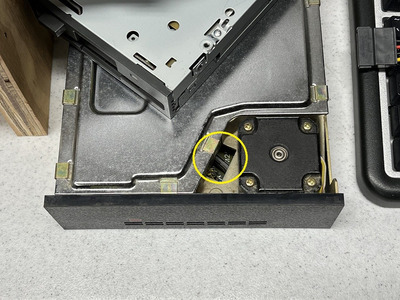First post, by douglar
- Rank
- Oldbie
I found an old 1/2 height Tandon TM252 MFM drive and an 8 bit controller. It's a venerable member of the generation of drives that fit "Drive Type 1" in the bios.
I was trying to get it to work on a Formosa Industrial UB-320SAI motherboard.
The motherboard didn't seem to get along with the 8 bit controller so I pulled out a WD 1006V-MM2.
Still didn't work. The drive would spin up fine and flash a light, but then it would give a sad grunt, and the mobo would throw a disk error.
The drive sat around for a month. Or three. Couldn't bring my self to throw it out. Didn't know what to do next.
Today I started poking at it again. I noticed that the actuator arm was visible through a hole by the motor and the "sad grunt" corresponded with a slight twitch in the arm.
I powered down, moved the drive arm a little with a flat head screw driver and when I powered it on, the drive came back to life! Yay!!
Pretty sure changing controllers caused any old data to be unreadable, but I was so excited to finally able to use those low level format routines in the BIOS for the first time in my life that I didn't care. Later I kind of wished later that I had slowed up a bit, just to see what was there, but whatever. That time has passed. Interleave testing!! OH boy. I remember people talking about that when I was a teenager. If I ever did these steps before, I've long forgotten.
Anyway, the drive is all formatted, error checked and ready to go now.
I'd like to use CF cards to ferry data to the device because floppy are cumbersome.
Does anyone have any tips on how to make an IDE drive work along side an MFM drive? Is there a formula to follow or do I just have to find an IDE controller that is kind?
